Offseason: Egypt
This is our penultimate non-sailing trip before we return to the Rivercafe and the new season begins. This trip took us to Egypt, on the Red Sea, 100 nm across from Saudi Arabia. Our first visit to Egypt and we were looking for some warmth. We finally catch sight of blue skies and a strange glowing, warming thing in the sky. I’ll get to its name in a minute.
We’re taking a break from the abundant and productive activities of our offseason. So we are actually on vacation, but of course we have our computers and a few tasks with us.
The Red Sea
Even though it implies that, the waterway that separates Africa and Asia is not a real ocean. 1,300 nm long (2,400 km) and up to 200 nm wide, it covers a considerable area and is also one of the most important waterways in the world with the Suez Canal to the Mediterranean. After a few days here, we also understand why the route through the Red Sea has such a bad reputation among sailors.
Our norwegian friends Nina and Eirik told us that the most unpleasant part of their circumnavigation was the 1,300 nm stretch from the Gulf of Aden to the Mediterranean. During our visit, there were constantly strong winds of around 30 knots from the north and plenty of whitecaps on the sea. Everything on the nose if you want to get into the Mediterranean. It gets a bit calmer at night.
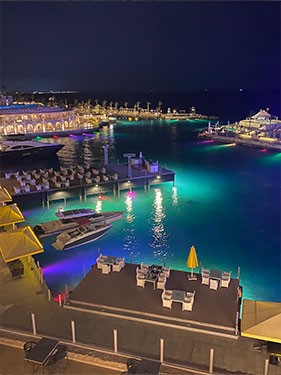
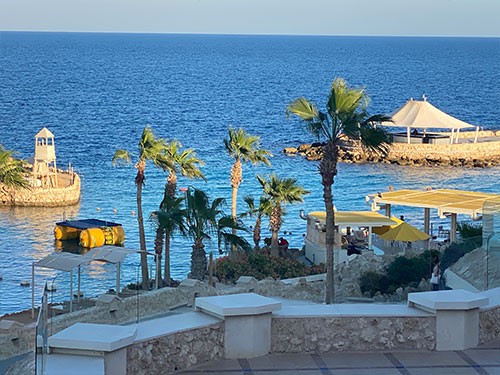
View to the red sea
The trip is usually non-stop, as mooring or anchoring in the 7 countries directly bordering on the Mediterranean is difficult or usually not permitted. This makes it a strenuous trip. In the past, pirates in the Horn of Africa made the route through the Red Sea difficult. Today, it is the Houthis in Yemen who have discovered the new hobby of firing at vessels. The fact that they are also polluting the sea with oil fits in quite well with the present, in which war and cavemen stuff are more important than common sense and the urgent need to protect the environment. Wouldn’t it really be a triumph if the Hamas people developed cold fusion instead of slaughtering people? Or the Houthis would invent something to bind Co2 instead of letting their people starve in Yemen. There are many more ideas for other despots. Brain instead of bazooka.
Barren Egypt
What draws visitors to a country that is 95% desert? If you’re not into desolate barrenness, history and the Red Sea, of course. American friends were impressed when I told them that I was born in a 2,000-year-old city.
Agriculture was practiced in the Nile Valley as early as 5,400 BC. A look at Google Earth shows that life only flourishes near the Nile. In 2,650 BC, the guys were already building pyramids and it is still not clear how they were able to erect these cuboids weighing tons. But just like in the city where I was born, things went downhill in Egypt in modern times.


View into the Nile valey in Luxor, Valley of the Kings
The 120 million Egyptians continue to grow, but most of them are poor and poverty is increasing. This is despite the fact that Egypt is the second most industrialized country in Africa after South Africa. Income is around €200 per month. Tourism is vital for survival and every tip from a visitor is highly valued, especially in foreign currency, given the 34% inflation rate.
Karnak and the Valley of the Kings
In my history course at school, I was once invited to write a report on the Valley of the Kings. Probably the most famous burial site in the world. I’ve never been as close to it as here. So we set off on the 300 km journey from the Red Sea to the city of Luxor, the former capital of the pharaohs and home to 1.5 million people. It was a monotonous seven-hour drive through a desolate, mostly sandy and littered landscape.
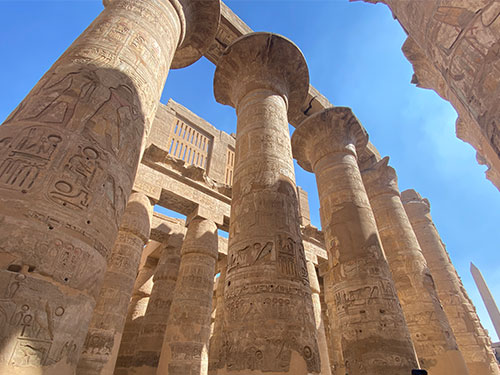
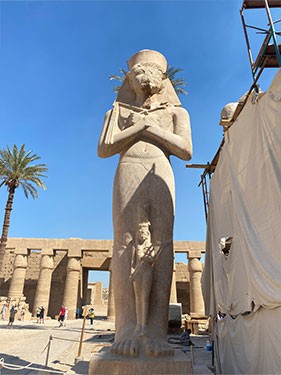

Temple of Karnak
We did the full tourist program: Karnak Temple, the Valley of the Kings, Hatshepsut Temple and a few other worthwhile destinations. The spectacular Karnak Temple was built over 2,000 years, from 2,055 B.C. Probably the longest construction period of a film set for a James Bond: 1978’s “The Spy Who Loved Me”. This place is a masterpiece and a symbol of the incredible things people can achieve. (Brain instead of bazooka). Back then technical and spiritual, today commercial wise. A symbol of the changing times.

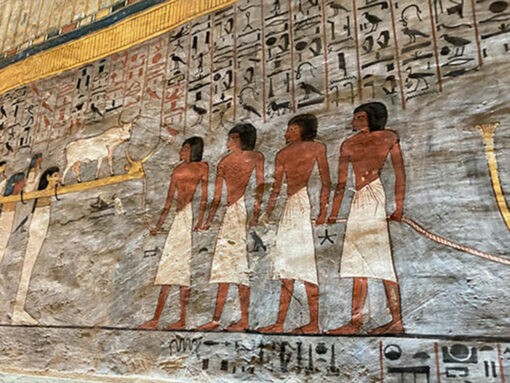


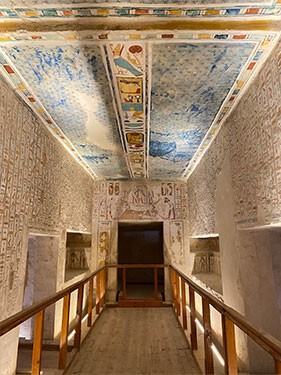
Inside the tomp, original colors after 3.000 years

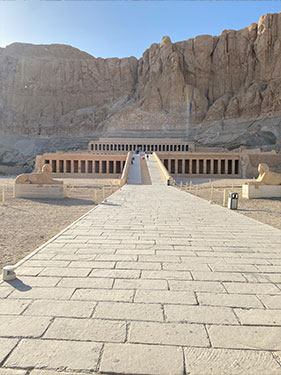

Hatshepsut Temple, a female Pharao
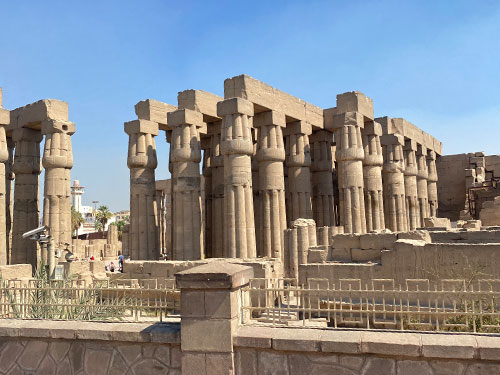
Luxor Temple

Stehrümchen
The Valley of the Kings is gigantic. I wish I had seen it before my school presentation. Very impressive that after more than 3,000 years the colors in the tombs are still brighter than in some new buildings in our times after 10 years. If the guys back then had invested their incredible talents in something other than kings’ tombs, Egypt would probably still be a world power today.
Luxor and the Nile
A drive through Luxor showed us a typical southerly city, where everyone tries to earn a living with petty trade and other businesses. Garbage is omnipresent and the air is stifling. It was a pleasant day with 28 degrees celsius, but in summer at 40 degrees plus, it is certainly a bit more strenuous.
Luxor is located at the Nile. The longest river in the world at 6,600 km (in dispute with the Amazon) flows through 12 countries into the Mediterranean. This is probably one of the reasons for the water quality in the Mediterranean. This lifeline of Egypt is filthy. That doesn’t stop 300 cruise ships from sailing their guests Agatha Christie style along the Nile from Aswan in the south to Cairo and back. Definitely not a beach vacation.
Water world in the Red Sea
What an elegant transition that is back to the Red Sea. Diving, snorkeling and swimming there is a real pleasure. At this time of year – winter/spring – it’s only for the really tough, because the water is really character building, below 20 degrees. We were only able to last an hour in the refreshing water with borrowed neoprene. The variety of fish is impressive and there are even healthy, colorful corals. A great spot for everything underwater.
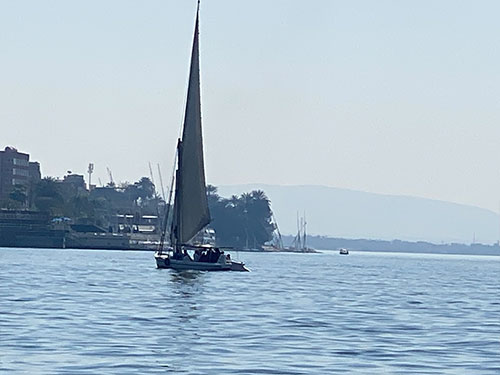
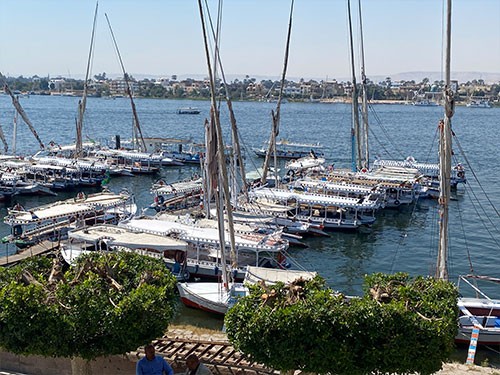
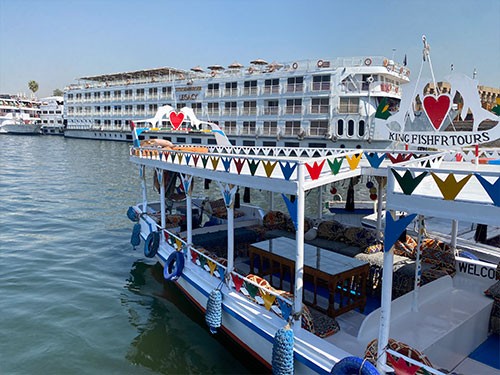
Sailors, tourist boats and cruise ships
Tourism in Egypt is mostly organized. Individual travel is complicated and obviously not welcome. As a tourist, you cannot spontaneously set off on your own. You have to register your trip with the police in advance, which is complicated in terms of language. There are many checkpoints and plenty of armed soldiers who prefer to speak only Arabic. That’s why there are tourist spots that have been wrested from the barren landscape. There are plenty of hotels at these spots, for every budget. You get what you pay for.
We will now leave Egypt again. In the good knowledge that there are still healthy underwater landscapes. We now have a few more days near Frankfurt and Berlin before we set off for Montenegro again. For a new sailing season / Holger Binz


Danke für den interessanten Bericht
Lieben Gruß
Jürgen